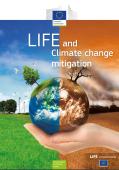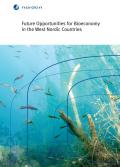This policy brief contains key findings and recommendations for improvements in existing collection and recycling systems for plastic waste from households and other municipal waste sources, a project within the Nordic Prime Ministers’ initiative, The Nordic Region – leading in green growth. It is one of six Nordic projects focusing on resource efficient recycling of plastic and textile waste.

Green growth and transport combines several different concepts that are central to sustainable mobility, including sustainable economic activity, reduced environmental impact and sustained growth in high quality jobs. It attempts to balance the importance of economic growth, with environmental damage and social priorities through assessing positive actions that can be taken by a wide variety of public and private stakeholders. It has arisen out of the concern over the use of non-renewable resources in transport, increasing emissions of carbon and other pollutants, and the expected levels of growth in mobility over the next 40 years. But it also acknowledges the importance of transport to the economy, and its role in helping to create jobs, improving levels of productivity and output, and in promoting agglomeration benefits. This means that transport should be efficient, but at the same time make less demand on the environment through less use of resources, through recycling and reuse of materials, and through embracing a life cycle perspective.
Korea Environment Institute (KEI)’s Global Strategy Center has published Greenable, since 2012, to share global environmental issues and its related research conducted in KEI. This volume (Volume 2, 2014) helps advance knowledge on the measurement of progress for sustainable development. The articles in this volume include: Guidelines for the Development of Green Economy Indicators in Developing Countries; Case Studies for the Development and Use of Green Economy Indicators in Developing Countries; Korea's Sustainable Development Indicators: Characteristics and Usage; and Korea Environment Institute’s Research Projects on the Development of Indicators for Sustainable Development.

